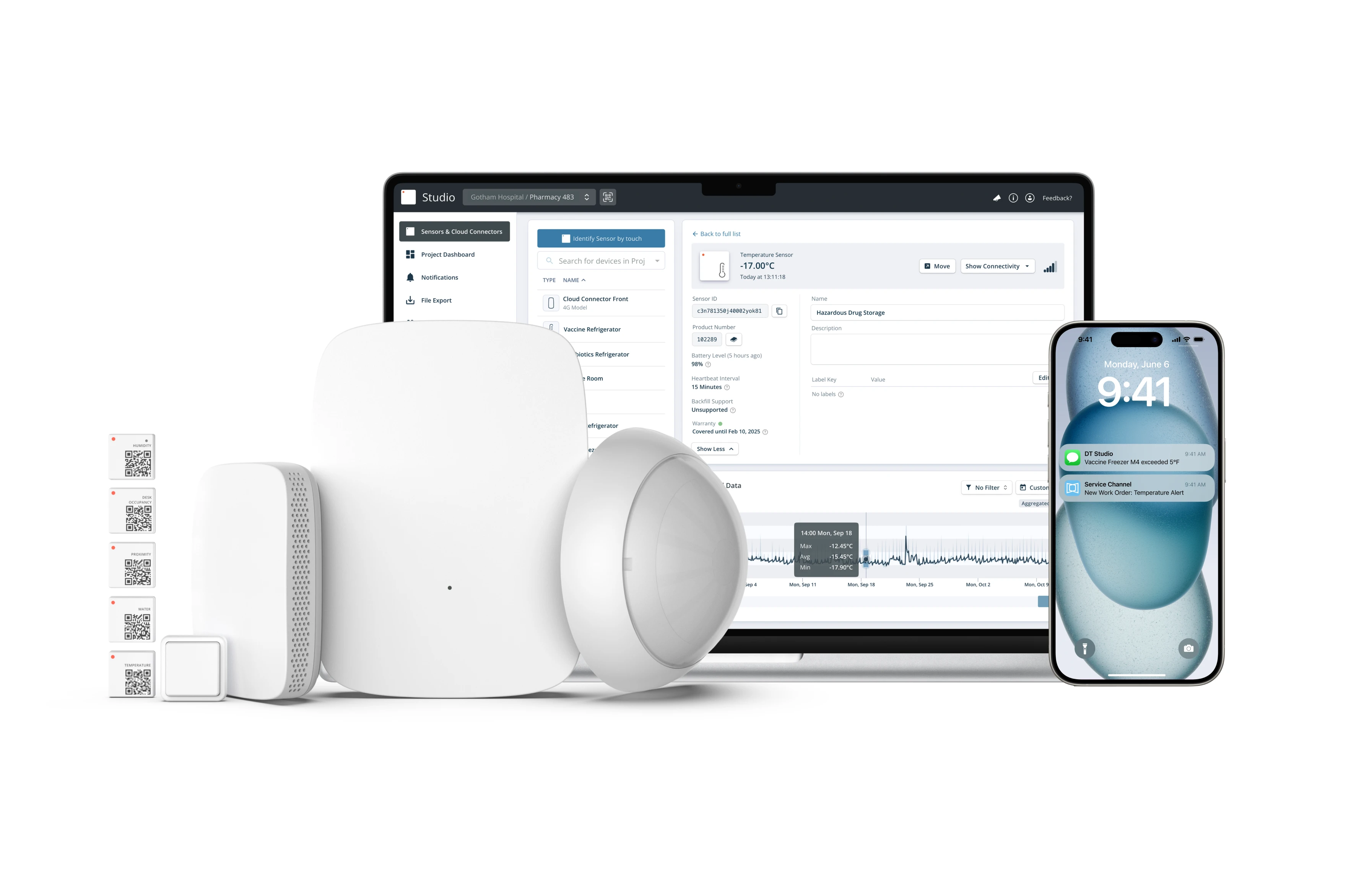Quantifying the ROI of IoT
.webp)
The advent of the Internet of Things (IoT) technologies has had a disruptive effect on smart buildings and facilities management. Based on the deployment of sensors and other internet-connected devices, IoT applications provide tenants, building owners, and facility managers with real-time visibility on the status of spaces, equipment, and other assets.
Furthermore, IoT technologies process sensed information about these assets towards optimizing building and facilities management processes. In these ways, IoT applications provide significant benefits, including:
- Reduced maintenance costs
- Energy savings
- Improved environmental performance
- Cost-effective regulatory compliance
Despite these benefits, many enterprises are still reluctant to invest in IoT-based building management and related facilities management systems. One of the main reasons is that new technologies tend to be associated with a lot of hype about their merit and potential business benefits.
How to Measure the Financial Returns on Your IoT Investments
In the past, investments in new technologies have failed to deliver significant financial returns. This makes C- level executives and other decision- makers very sensitive against investments in innovative technologies and services.
It is possible to calculate tangible capital budgeting indicators for IoT deployment. These indicators illustrate and quantify the impact of IoT technology investments on corporate Profit and Loss (P&L) accounts. Hence, they are usually understandable and accepted by key decision-makers, and help to unlock decisions for IoT investments.
Calculating Return on Investment as a Measure of Financial Effectiveness
The calculation of capital budgeting and financial returns indicators hinges on the production of credible estimates for the Total Gains of the investment and the Total Costs of the Investment.
For example, the popular Return on Investment (ROI) Indicator can be calculated as follows:

According to this formula, an ROI calculation boils down to the calculation of the total gains and the total costs of an investment.
How to Calculate Costs
Producing a credible estimate of the total costs is usually straightforward, as most of the costs are known with high accuracy. The main challenge in estimating the costs lies in making sure that all the cost factors are taken into account.
Here are some possible costs to consider:
- Previous operational costs
- New operational costs
- Hardware
- Software
- Integration
- Consulting & training
- Maintenance & support
- Energy costs.
There might also be potential hidden costs. For example:
- Legal support costs
- Recurring maintenance costs for the investment
- Costs associated with the extra engagement of employees in the realization of the investment
All of these costs should be considered when calculating the Total Cost of Ownership (TCO).
How to Calculate Benefits
On the other hand, the calculation of the benefits is more demanding. It requires the estimation of the various benefits of the investment, including:
- New revenue streams
- Reduction of operational costs
- Cash flows stemming from increased sales and customer satisfaction.
- New revenue streams
- Reduction of operational costs
- Cash flows stemming from increased sales and customer satisfaction.
The estimation of these parameters is usually associated with some assumptions for future revenues and reduced costs, which cannot be always accurate. Hence, the estimation of benefits incorporates the uncertainty of these assumptions and the inaccuracy of future predictions. A robust ROI calculation process must calculate potential gains based on realistic assumptions about cost reductions and new cash flows that will be produced due to the new investment.
Nevertheless, there are always intangible benefits that cannot be credibly quantified. For instance, the positive effects of investment on the strategic positioning and brand image of an industrial enterprise can be hardly quantified.
This is one of the known limitations of the ROI methodology, which remains one of our best tools for estimating financial returns nonetheless.
Other Measures of IoT Implementation Profitability
ROI is a quantitative measure of the financial returns of an investment. It is also a very good tool for comparing and prioritizing alternative investments. C-level executives and other decision-makers are likely to prioritize the investments that yield a higher ROI.
ROI is not the only financial return indicator used in practice. Several companies calculate and consider other indicators as well. For instance, enterprises tend to consider the payback period of an investment i.e. the time it will take for the company to amortize the investment.
Moreover, the Net Present Value (NPV) of the investment is very commonly calculated. NPV considers the time value of money i.e. the fact that present investments and cash flows have higher values in the future. This is because once obtained, they can be invested to provide additional yields.
Furthermore, for investments that are materialized over very long periods (e.g., many years), many enterprises calculate the Internal Rate of Return (IRR) of the investment. While ROI indicates the total growth of the investment (i.e. from start to finish), IRR identifies the annual growth rate of the investment in the form of a percentage (%). IRR considers the time value of money (i.e. the NPV of costs and benefits) and hence it is more appropriate for quantifying investments that span multiple years.
The formulas for calculating NPV and IRR are more complex than the ROI formula, and they can all be found in most popular spreadsheet applications and statistical tools.
Get Started




.png)
.png)
